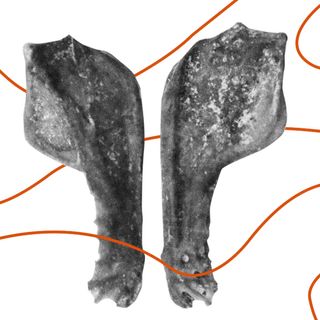The speed of the Earth’s rotation may have contributed to how oxygen-rich the atmosphere is, according to a new study published in Nature Geoscience yesterday.
“An enduring question in Earth sciences has been how did Earth’s atmosphere get its oxygen, and what factors controlled when this oxygenation took place,” Gregory Dick, a microbiologist from the University of Michigan, who co-authored the study, told the press.
The researchers looked at Earth’s slowing rotation cycle, and found interesting answers. When the Moon was newly formed, days on the Earth were simply five hours’ long — as opposed to the 24-hour-days we know today. The slowdown in Earth’s rotation has resulted in longer days, which may have resulted in more oxygen in the atmosphere.
“We tie together laws of physics operating at vastly different scales… [and] show that there is a fundamental link between day length and how much oxygen can be released by ground-dwelling microbes,” Arjun Chennu, a marine scientist from the Leibniz Centre for Tropical Marine Research in Germany, who co-authored the study, said in a statement.
Around 4.6 billion years ago, the Earth’s atmosphere was primarily constituted of hydrogen sulfide, methane, and carbon dioxide. Then, about 2.4 billion years ago, the Great Oxidation Effect led to the accumulation of oxygen in the planet’s atmosphere, where it grew steadily until it stabilized about 400 million years ago, giving us the oxygen levels we have now.
Scientists have linked this oxidation to photosynthesis process by cyanobacteria (blue-green algae) — which results in the release of oxygen into the atmosphere. But the new research suggests that the length of days on the Earth may also have had a role to play in making our atmosphere rich in oxygen.
“Our research suggests that the rate at which Earth is spinning — in other words, its day length — may have had an important effect on the pattern and timing of Earth’s oxygenation,” Dick added.
Related on The Swaddle:
Lack of Oxygen Will End All Life on Earth a Billion Years From Now, Say Scientists
When the Earth completes its rotation and the sun “rises” high enough in the sky, the purple cyanobacteria rise to the top and “start to photosynthesize and produce oxygen,” Judith Klatt, a geomicrobiologist from the Max Planck Institute for Marine Microbiology in Germany, explained. Klatt noted that “it takes a few hours before they really get going, there is a long lag in the morning… the cyanobacteria are rather late risers than morning persons, it seems.”
But with the days increasing in length, and there being more sun-time, the amount of oxygen the cyanobacteria produce is naturally more. “Intuition suggests that two 12-hour days should be similar to one 24-hour day… [But] the sunlight rises and falls twice as fast, and the oxygen production follows in lockstep,” Chennu explained.
Moreover, a longer day — rather than two shorter days — also means the “long lag” Klatt refers to appears only once, leaving cyanobacteria with a larger window to photosynthesize.
The findings also raise the question of why the Earth’s rotation is slowing down. We know the moon has a gravitational pull on the planet; and for a long time now, the moon is spinning away from the Earth — around the same speed at which our fingernails grow. Over time, this has a “braking effect” on Earth due to gravitational and tidal forces interacting between the two. This has slowed down the Earth’s rotation; evidence shows we’re gaining 1.8 milliseconds a century as this happens.
And, as the moon continues to move further away, the rotation of the Earth is slowing down further — resulting, of course, in more oxygen.
“It’s pretty exciting. This way we link the dance of the molecules in the microbial mat to the dance of our planet and its Moon,” Chennu noted.




